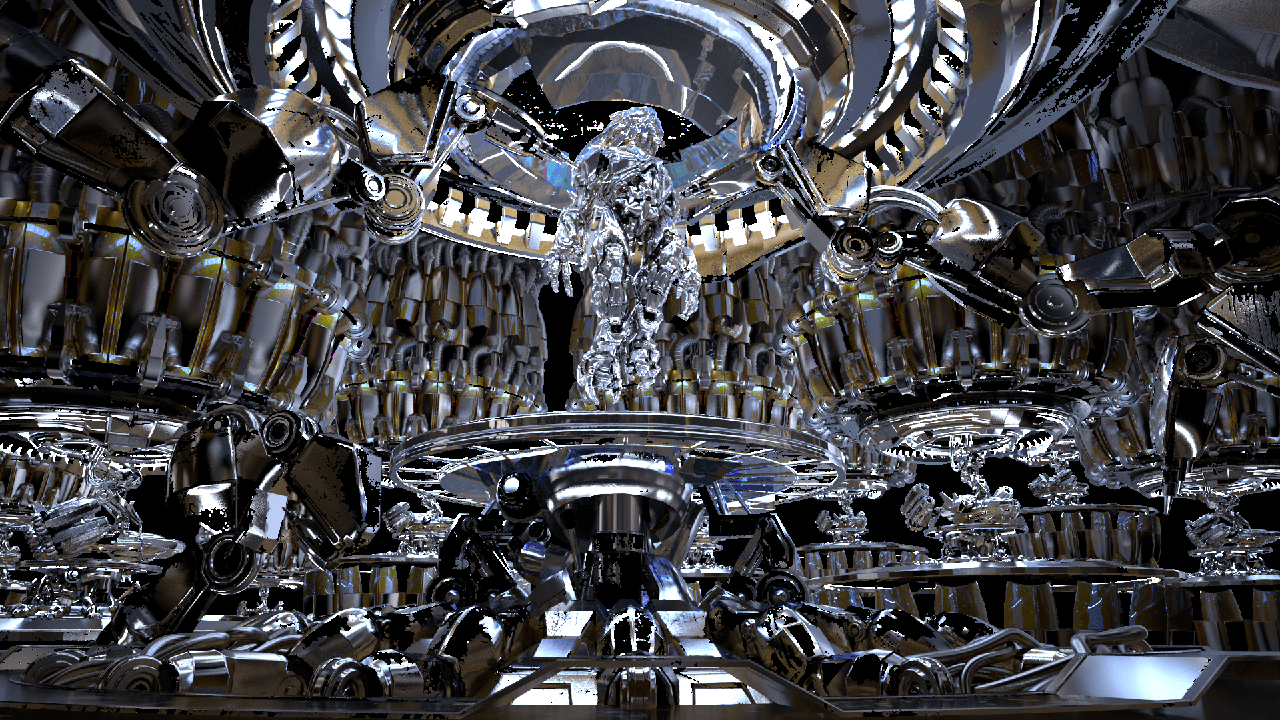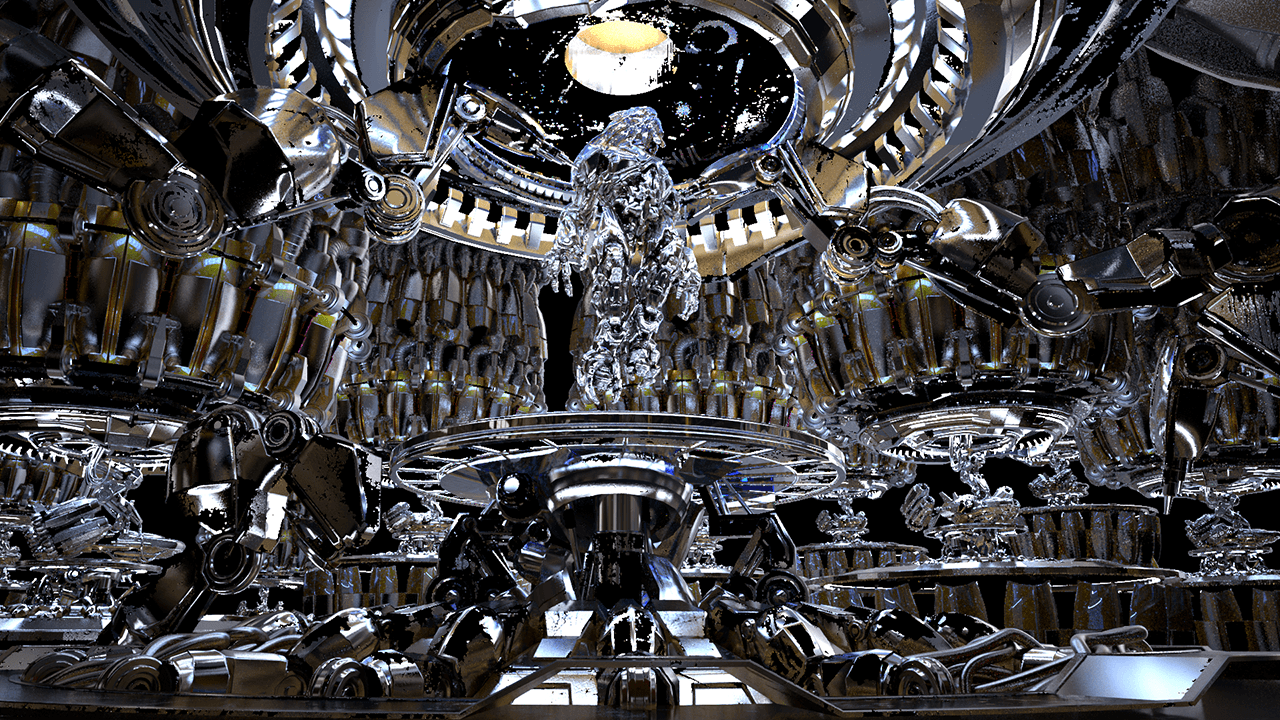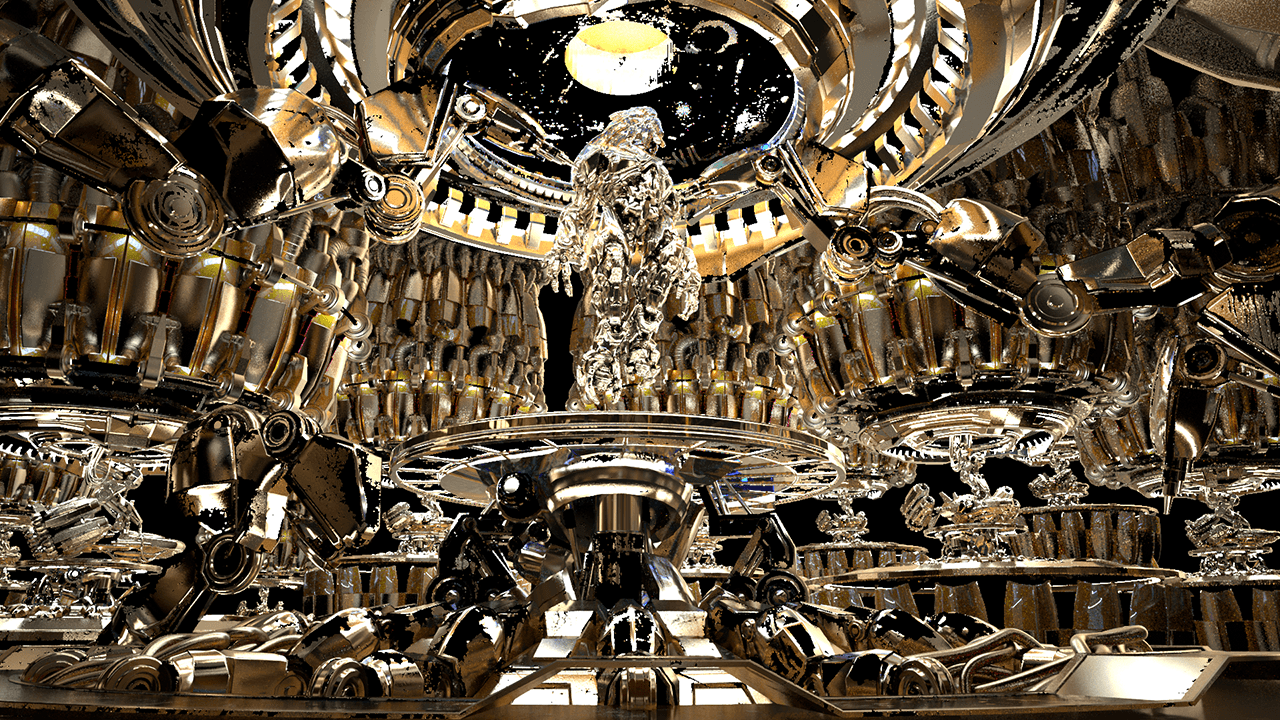This page gives some basic details about the Raw Reflection render element and how it is used in compositing.
Overview
The Raw Reflection Render Element stores reflection information calculated from the materials' reflection values in the scene. Surfaces with no reflection values set in their materials will contain no information in the render element, which means these areas will render as black. When the Raw Reflection Render Element is multiplied by the Reflection Filter (vrayRE_Reflection_Filter), the Reflection (vrayRE_Reflection) Render Element is produced.
vrayRE_Raw_Reflection gives the full reflection of objects reflecting in the scene, while the reflection filter vrayRE_Reflection_Filter sets how much of that reflection should come through in the composite. In other words, the filter defines the strength of the reflection, while the raw image defines what is being reflected in the image. When these two elements are multiplied, the true level of reflection is given as the vrayRE_Reflection Render Element. By using these component parts of the reflection, you can fine-tune the reflection in your final composite.
Attributes
The parameters for this render element appear in the Attribute Editor under Extra V-Ray Attributes.
Enabled – Enables the render element inside the V-Ray frame buffer.
Deep output – Specifies whether to include this render element in deep images.
Filename suffix – The text added to the end of the rendered file, when saved as a separate file (e.g. myrender.rawReflection.vrimg).
Apply color mapping – Applies the color mapping options specified in the Color mapping rollout of the VRay tab in the Render Settings window to this render element. This option is enabled by default.
Denoise – Enables the render element's denoising, provided the Denoiser render element is present.
There is initial support for Raw Reflection render element on V-Ray GPU.
Common uses
The Raw Reflection Render Element is useful for changing the appearance of reflective scene elements in compositing or image editing software after the scene is rendered. Below are a couple of examples of its use.
Reflection Render Element
Original Beauty Composite
Brightened Reflection Render Element
Brightened and warmed Reflection Render Element
Brightened reflections
Warmed and raised reflections
Underlying Compositing Equation
vrayRE_Raw_Reflection x Reflection Filter = Reflection










